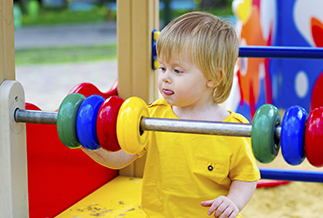Numeracy for kids
Little Numeracy Lessons

Numeracy is a vital tool for children. It plays a crucial role in aiding children’s progress at school and is a valuable life-skill all children need. We asked an educational consultant for tips on what to do to develop a child’s numeracy skills - primarily from learning through play.
Be prepared to be creative. Every object you use during the day can be used as a potential counter.
The focus should be on learning through play. Toddlers have a limited attention span so be prepared for them to wander off mid exercise. It’s important to be flexible. The steps outlined below are the very basic elements of developing numeracy skills. Once they have been established you can extend the complexity of the tasks suggested.
- It’s important to use repetition as often as you can. For instance, count out the bowls for breakfast time. Count out the spoons. Encourage your toddler to count with you.
- Start with familiarising them with hearing the numbers between 1-10. You can build on these numbers once your child has a consolidated understanding of them.
- It’s important not to limit your counting to a home setting. You can count cars while out driving or putting food in your trolley at the supermarket.
- Singing songs with numbers in them is an excellent way to promote number recognition. For instance, when singing songs with numbers in them, hold up the right number of your fingers in front of your child. This is an excellent way to promote an understanding of quantity recognition with your child.
- Once they can verbalise these numbers you can work on visual recognition. It’s best to start with the child’s own age. Encourage your child to draw this number. Start with getting them to trace over it. Repeat this exercise until they are able to draw the number independently.
- Once they have established familiarity with writing their age work through the rest of the numbers from 1-10.
- Once you have established number recognition, you can work on developing your child’s ability to add or subtract objects. It is important to focus on learning through play, rather than in a structured learning environment at this age.
- The key is modelling the practice of adding and subtracting. For instance, take out three bowls and model taking one away and getting your child to count how many are left. You can then carry this practice out in reverse.
- When your child has done a drawing, get them to count how many flowers or trucks they have drawn and get them to write the number down.
These simple steps will help establish an excellent basis for developing your child’s numeracy skills and serve as a foundation from where you can work with your child to further their learning. Remember each child learns at a different rate so flexibility and learning through play is the key to developing a numerate child at this stage of their development.
For more information see Parents and children. or Parenting.
For more nursery rhymes and their origins: Click here
For more nursery rhymes with counting in them: Click here

